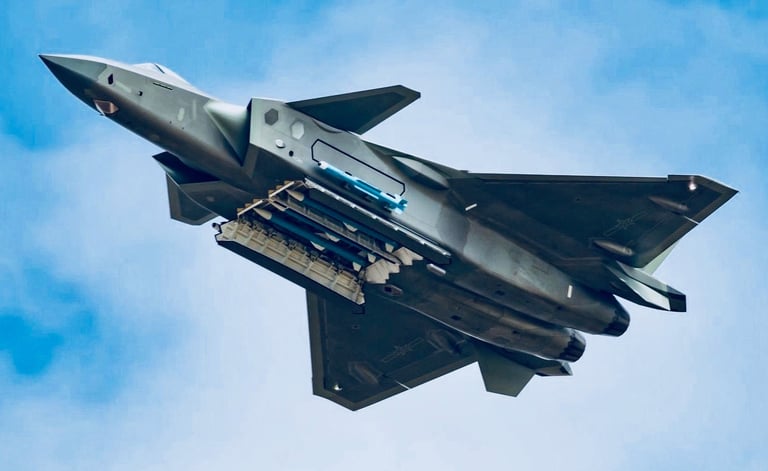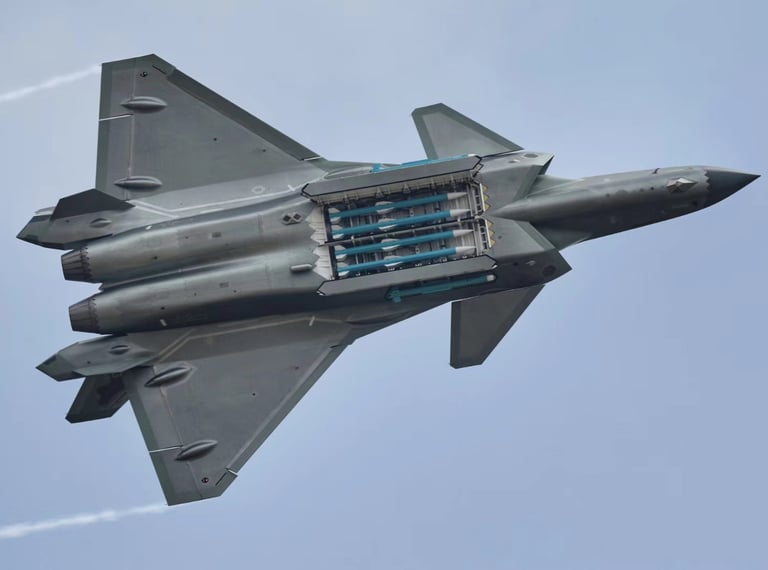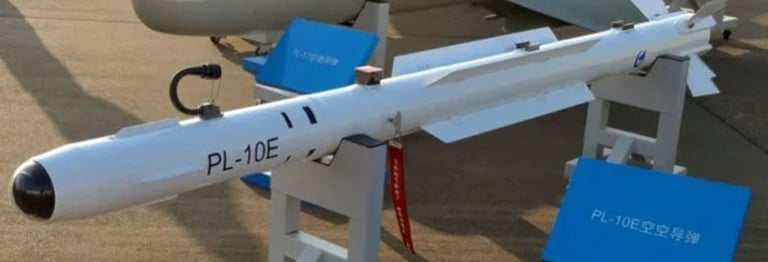Why J-20 carries PL-10 outside its weapon bay?
fact for 24/5/2021
FACTS
Lock-on after launch capability is not an easy one to achieve. It is technologically complex, requires deep systems integration (software architecture permitting), and robust testing using live missiles, and thus it is expensive. China figured out a way to employ any new or relatively archaic high-off-bore-sight short ranged air to air missile while keeping the jet’s aerodynamics relatively intact (doors closed during prolonged maneuvering while the missile hangs out on its rail) while also minimizing the impact a ‘deployed missile’ has on the J-20’s low radar cross-section
China just said “we don’t want to have to rely on LOAL capability, so why not just temporarily (as in for seconds or minutes) mount a similarly agile, but much less complex and expensive, short ranged air-to-air missile outside of the bay during times when close range combat is imminent?




This is exactly what they did , Radar signature becomes a small factor when fighting for one’s life at close range, having a reliable missile ready to make a u-turn off the rail and subsequently turn your enemy into chaff is so important that is can be seen as a life and death requirement (especially for a big, not remarkably maneuverable fighter). The alternative, such as the reality the F-22 has faced for the better part of a decade, is that you open the bay up for prolonged periods of time and pay a penalty in radar cross section and (some) performance. Also, by building a relatively simple contraption, kind of similar to one of those bars that goes on your lap on a roller coaster, albeit with a missile attached, Chinese engineers simplified the launch system
Another point to be taken from the J-20’s short-range air-to-air missile launch mechanism revelations are that designers absolutely thought it was necessary to give this jet high-off-bore-sight close range missile capability from day one, and in a reliable and persistent nature when needed. This could be due to lack of maneuverability and/or because of its mission, which for years is to break through the enemy’s (American, Taiwanese etc.) fighter cover and take out their enablers (see tankers, AEW&C, C2 and connectivity nodes)
In such a case, being electronically silent is your best bet at surviving, so using infra-red passively guided missiles, which require no electronic emissions, at medium-close ranges may be your only play, at least for anything that does not put out a continuous or semi-continuous form of radiation (see AWACS or JSTARS). In that case, a passively guided anti-radiation missile may be the J-20’s weapon of choice, or a medium-long range AAM that can get within locking distance and featuring active radar or IR for terminal homing, via a traditional data-link feeding the J-20’s targeting picture to it provided by passive sensors (IRST, ESM etc).


The PL-10 that is fired from these side bays is something of a short-to-intermediate range air-to-air missile. This means that in addition to the missile being capable of high-off-boresight shots that are cued via the J-20’s helmet-mounted display or other sensors during a dogfight, it is also capable of near beyond-visual-range engagements as well
Able to reach out over a dozen miles or so (possibly substantially farther according to different assessments), this missile, combined with its ability to ride outside of the J-20’s side-bays, The J-20 can leverage its stealth and sneak up on targets without emitting any electromagnetic energy, using just its advanced passive avionics, which includes electronic surveillance measures, infrared search and track and electro-optical targeting systems, and third-party sensor data fed to it via data-link, to locate its prey
In other words, the J-20 can take advantage of the PL-10 when maximum emissions control tactics are used or when it has snuck up on its target and gets within close, but not yet short-range. Using these methods, the J-20 pilot can also use the PL-10 for offensive tasks when its longer-range missiles are expended. Considering the jet only carries four long-range missiles, at least at this time, being able to wield the PL-10 to its maximum potential is key. Once again, this is in addition to using the missile in classic close-range dogfighting scenarios.
Finally, an infrared-guided missile with decent range like this and the ability to hang outside the bay for prolonged periods of time is also a good fallback when fighting in heavy electronic warfare environments as the missile’s imaging infrared seeker is not impacted by electronic warfare tactics.
info gathered by - Exeter#3926 from defence matrix discord
